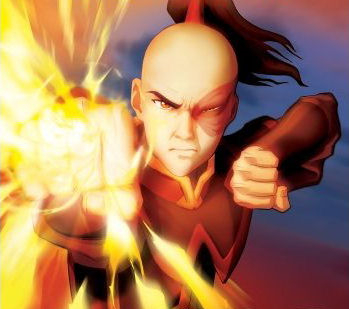WARNING: SPOILER ALERT, if you haven't already seen the film , then a further reading is not advisable .
The movie takes off in a dramatic note.Kolkata , The city of Joy , is dissected by a series of murders which takes place across the length and breadth of the city. A psychopath serial killer is on the loose, and he mostly targets people from the lower echelons of the society, and after each murder he leaves a small piece of paper beside the dead corpse .A poem (by a famous Bengali poet), which the police later finds aptly symbolises the circumstance involving the murder, is scribbled in that paper. The Kolkata police force is baffled , scratching their thick heads unable to come up with anything fruitful. With nothing left to lose, the police chief recalled a suspended officer, whom he deemed could provide valuable expert insight into the case . The officer in question , is Prabir Roychoudhury(Prosenjeet Chaterjee), who was convicted of custodian murder and eventually suspended from the police. His deep rooted hatred for lowly criminals, often taking the form of excessive aggression lead to his eviction from the force.
I had gone to watch the movie after hearing much about its "twist" ending. I was wary of guessing the "twist", and was half correct about my apprehensions.The film which is a first of its kind in bengali cinema , can analysed by two different angles: 1> how it compares with its predecessors in Bengali cinema?2> Its level of comparability in the international context.
I prefer to answer neither questions in its full subjectivity , as i have already made it clear that my lack of adequate knowledge prevents me from doing so ,but surely from the point of view of an audience whose view about the art of film-making has matured through the years, I shall proceed. The elements of objectivity of the film were already made clear from the first shot , as we were going on a thrill ride through dark alleys of kolkata and darker alleys of people's minds.Abhijit (Parambrata) finds himself in a fix when unable to get a lead in the case, Prabir comes in the way , whose eccentricities initially got on his nerves.To take care of the commercial aspects, the director slyly puts in five melodious numbers scored by Anupam Roy, and also at the right moments. The verses , fittingly got synchronized with the situation . The most satisfying aspect , which I found was that , unlike the escapists realities of bollywood premises, here the score remained largely background and believable. In this regard ,the director has shown a way for future Indian films . In real life, people usually don't put on their dancing shoes and grooves to the beats suddenly in the middle of their daily routines.
I had gone to watch the movie after hearing much about its "twist" ending. I was wary of guessing the "twist", and was half correct about my apprehensions.The film which is a first of its kind in bengali cinema , can analysed by two different angles: 1> how it compares with its predecessors in Bengali cinema?2> Its level of comparability in the international context.
I prefer to answer neither questions in its full subjectivity , as i have already made it clear that my lack of adequate knowledge prevents me from doing so ,but surely from the point of view of an audience whose view about the art of film-making has matured through the years, I shall proceed. The elements of objectivity of the film were already made clear from the first shot , as we were going on a thrill ride through dark alleys of kolkata and darker alleys of people's minds.Abhijit (Parambrata) finds himself in a fix when unable to get a lead in the case, Prabir comes in the way , whose eccentricities initially got on his nerves.To take care of the commercial aspects, the director slyly puts in five melodious numbers scored by Anupam Roy, and also at the right moments. The verses , fittingly got synchronized with the situation . The most satisfying aspect , which I found was that , unlike the escapists realities of bollywood premises, here the score remained largely background and believable. In this regard ,the director has shown a way for future Indian films . In real life, people usually don't put on their dancing shoes and grooves to the beats suddenly in the middle of their daily routines.
The dialogues were quite mature and there were some cross references(at one point Prosenjit in exultant excitement , Parambrata "Topshe" in reference to his earlier stint with the character) to other films. The dialogue , apart from the "twist" ending is the one which generated the most discussions among its viewers. Some vehemently criticising it for its low derogatory use of obscene cuss words , at times quite unnecessarily. Well, while this may limit the audience , but it does portray the lingo of the law enforcers not quite in a good light. I would abstain from giving my own opinions on this issue.The dialogue , though containing doses of colourful vocabulary, some humourous , some taking a dig at the politicians, or our faulty democracy . Sometimes the darker elements of humour creeps in when prosenjit describes his favourite odour.
The one aspect of the film which I personally found to be quite amazing was the cinematography of the by-lanes and alleys at night, which are only lit by the silent street light giving the place an orange tinge.At times, the darker areas smolders into the lighter ones(during a chase scene) and the constant interplay of shades had its symbolic significance in the ever transforming nature of the human mind.
When a film boasts of an assemblage of such high profile cast, its hardly necessary to comment about the acting. Each actor brought about his character alive. Goutam Ghose, who returned as a actor after a very long time, gave a brilliant performance of a Hungryalist Bengali poet , whose poems were rejected on the grounds of being too obscene, which drove him to the point of frenziness. Parambrata fitted quite well in the boots of an idealist police officer and a man recovering from an estranged relationship. While Prosenjit's role drew applause from many quarters, I too found him too be brilliant-in most parts. In some parts he appeared to have slipped into his old avatar as an out -of- the -world action hero and delivered his lines in that same cliched format.
When a film boasts of an assemblage of such high profile cast, its hardly necessary to comment about the acting. Each actor brought about his character alive. Goutam Ghose, who returned as a actor after a very long time, gave a brilliant performance of a Hungryalist Bengali poet , whose poems were rejected on the grounds of being too obscene, which drove him to the point of frenziness. Parambrata fitted quite well in the boots of an idealist police officer and a man recovering from an estranged relationship. While Prosenjit's role drew applause from many quarters, I too found him too be brilliant-in most parts. In some parts he appeared to have slipped into his old avatar as an out -of- the -world action hero and delivered his lines in that same cliched format.
 The ending , proved my apprehensions half correct. Although some may argue my previous exposure to the movie viewer's discussion about the film may have spoiled it, still i would say that if i had no clue , I would still sense the ending when at one point Prosenjit had called Parambrata for some"important" issues in the film. The predictability of the ending takes me back to my previous two questions. I feel the ending, or rather the nature of it was its weakest aspect of a perfectly made film(relatively of course). The statement would raise many eye brows, but the whole point of a suspense thriller is the element of surprise. The surprise should come from an angle which the audience doesen't expect , but would later marvel at the cleverness of the director. Here I must mention it in the international context. "The sixth sense" by M.Night Shyamalan contained that punch, as it opened a whole different direction to the film. Also, the film "seven" featuring Morgan Freeman and Brad Pitt, which surprisingly bears some degree of similitude with 22se Srabon in its plot construction, delivers two surprise endings one of which was apparent while the other one was quite logical yet invisible to the audience. Now in this case ,the twist , instead of portraying it in one single frame shot which would have had a greater impact took quite some time for its build up . This was quite inadequate as it revealed the objectives of the director before he wanted the audience to know about it.
The ending , proved my apprehensions half correct. Although some may argue my previous exposure to the movie viewer's discussion about the film may have spoiled it, still i would say that if i had no clue , I would still sense the ending when at one point Prosenjit had called Parambrata for some"important" issues in the film. The predictability of the ending takes me back to my previous two questions. I feel the ending, or rather the nature of it was its weakest aspect of a perfectly made film(relatively of course). The statement would raise many eye brows, but the whole point of a suspense thriller is the element of surprise. The surprise should come from an angle which the audience doesen't expect , but would later marvel at the cleverness of the director. Here I must mention it in the international context. "The sixth sense" by M.Night Shyamalan contained that punch, as it opened a whole different direction to the film. Also, the film "seven" featuring Morgan Freeman and Brad Pitt, which surprisingly bears some degree of similitude with 22se Srabon in its plot construction, delivers two surprise endings one of which was apparent while the other one was quite logical yet invisible to the audience. Now in this case ,the twist , instead of portraying it in one single frame shot which would have had a greater impact took quite some time for its build up . This was quite inadequate as it revealed the objectives of the director before he wanted the audience to know about it.
The film , though cleverly diluted with the commercial aspects is still a breakthrough film for the dying industry of commercial India cinema. Dying not in the sense of economy, but art. A movie does not necessarily be of social importance , or a discourse of ethical dialogue, but as long as it can deliver in accordance with its objectivity , i will rate it as a great movie(keeping aside some consideration of the content).Having said, I think Baishe srabon , though not perfect, yet considering a film of it kind being made for the first time in Bengali with no references to look at and keeping the commercial aspects in mind, it did quite brilliantly. In the international context, some level of directorial maturity is still to be attained, but certainly those crappy Bollywood films doesn't stand a chance in comparison . Hope with time this renaissance of Bengali cinema blossoms , and let Bengali cinema break the stereotypical image of Indian film industry as only of escapist's nature.If Bengal wants to get back its lost glory why not start with cinema?
















